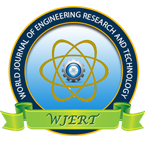| All | Since 2020 | |
| Citation | 172 | 110 |
| h-index | 7 | 5 |
| i10-index | 1 | 0 |
WJERT Citation 
Login
News & Updation
Abstract
MODELING THE INTEGRATION OF AUTOMATIC GENERATION CONTROL (AGC) AND FACTS DEVICES TO IMPROVE GENERATION BALANCE AND STABILITY OF THE NIGERIA 330KV POWER GRID
Agwu, Emmanuel Anayo*, Rufus Ogbuka Chime and I. I. Eneh
ABSTRACT
When there is poor regulation in any interconnected power system, it is reflected in the buildup of time error and abnormal or unintended power flow over tie-lines. In remote systems, time error is of great concern. The error, which can hasten or slow the clocks, thereby resulting in a loss of load that can be billed, is reduced or adjusted by offsetting the scheduled frequency from the wanted value for a given period of time. An Imbalance between the electrical load and the power supplied by the connected generators is a direct result of frequency deviation. The strategy used here for the integration is to model a neural network controller for controlling UPFC for the injection and adsorption of active and reactive power into the tie-line to maintain power balance via power electronics. This would modulate the power flow between the areas through the tie-line, especially in the event of load and generation disturbances in the controlled areas of the interconnected power system Power flow UPFC model contains two voltage source converters (VSC), one has shunt connection and the other has series connection. The converters have DC capacitors, which are connected in parallel. When switches, 1 and 2 are open, the converters are STATCOM and SSSC, governing the injected reactive current and voltage in shunt and series of the line. Closing switches 1 and 2 enables the two converters to transfer real power. The series connected converter can draw or generate the active power. The objective for this work is to model the integration of AGC and FACTS devices on the tie-line in the two area interconnected power system to control power flow. , this study proposes the use of software to improve generation balance of the 330KV Power Grid by integrating AGC-FACTS devices. Modeling of the UPFC power flow, initialization & dynamic modeling of the UPFC controller are vital in the modeling of the neural network for the control of the UPFC. Results obtained from the simulations carried out with the UPFC integrated into the tie – line of the interconnected power system shows improvement of the time error and ACE reduction curve following the load disturbance.
[Full Text Article] [Download Certificate]
